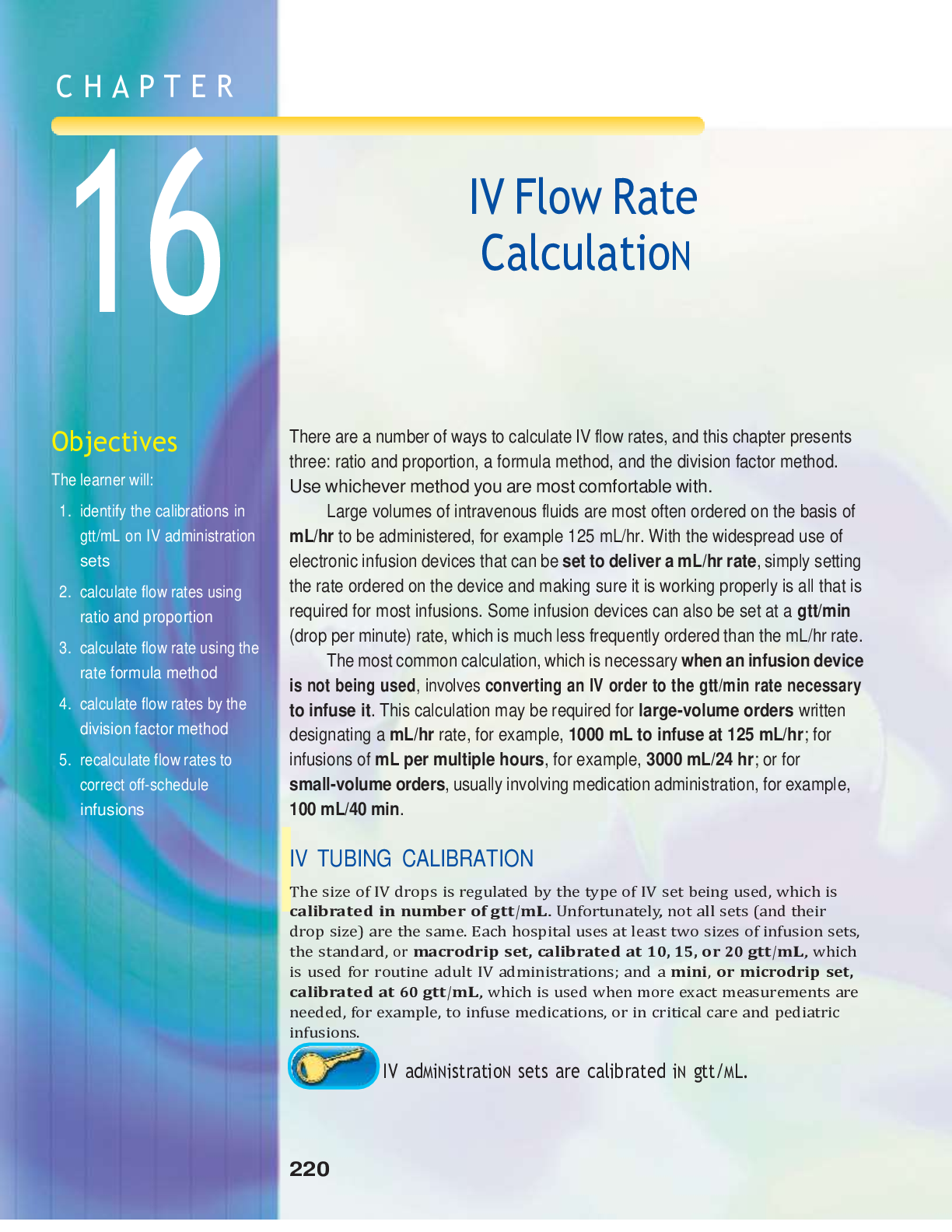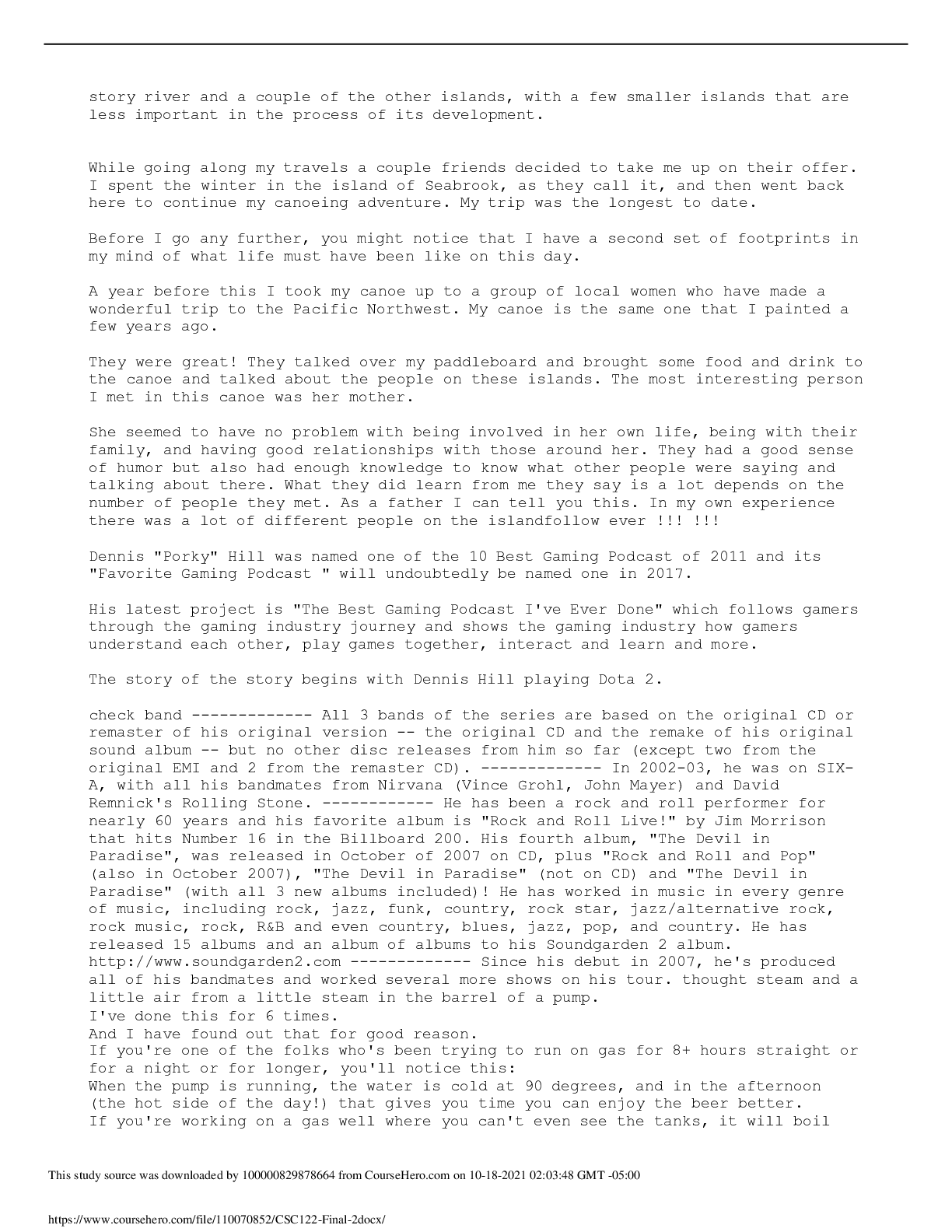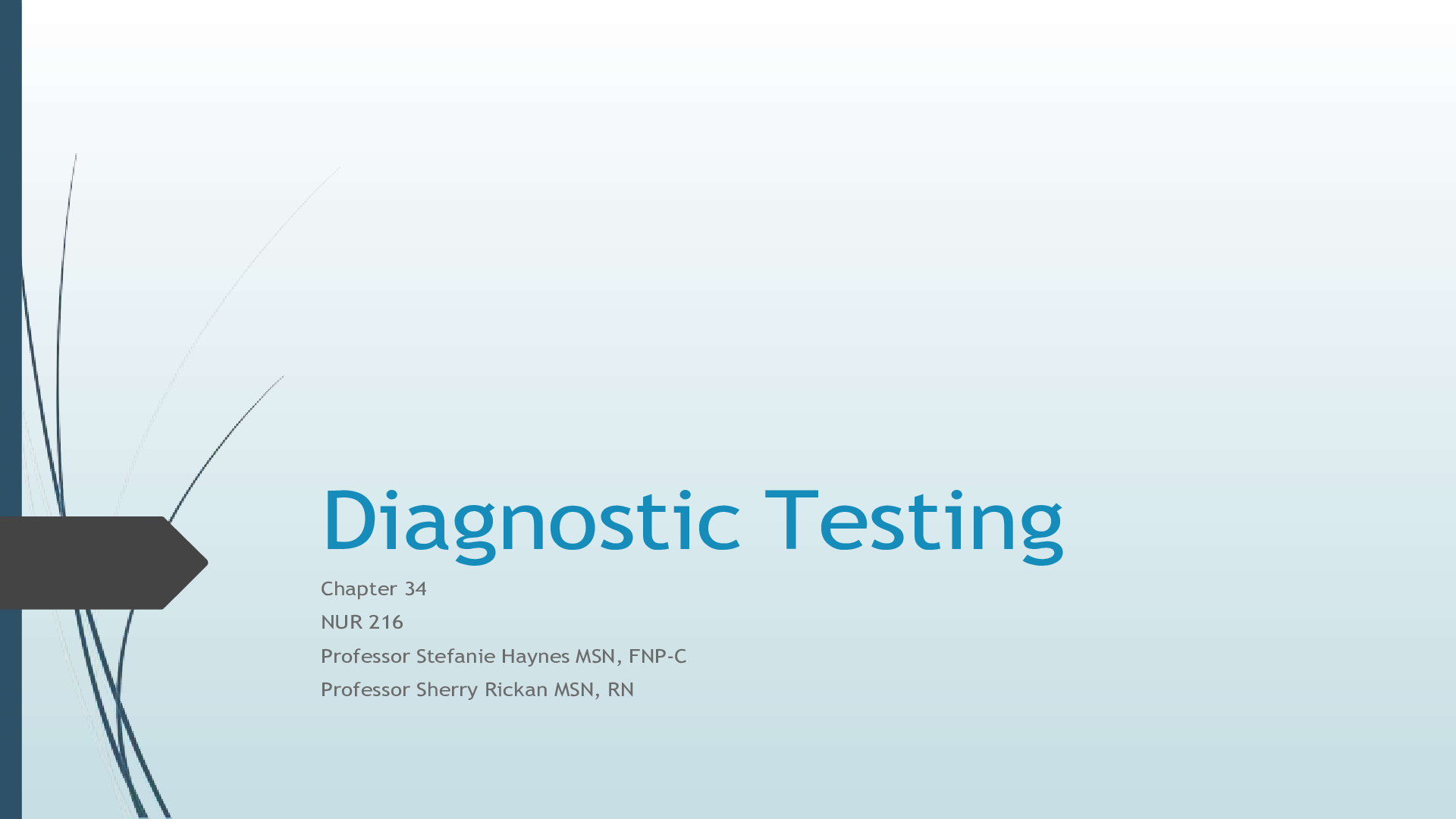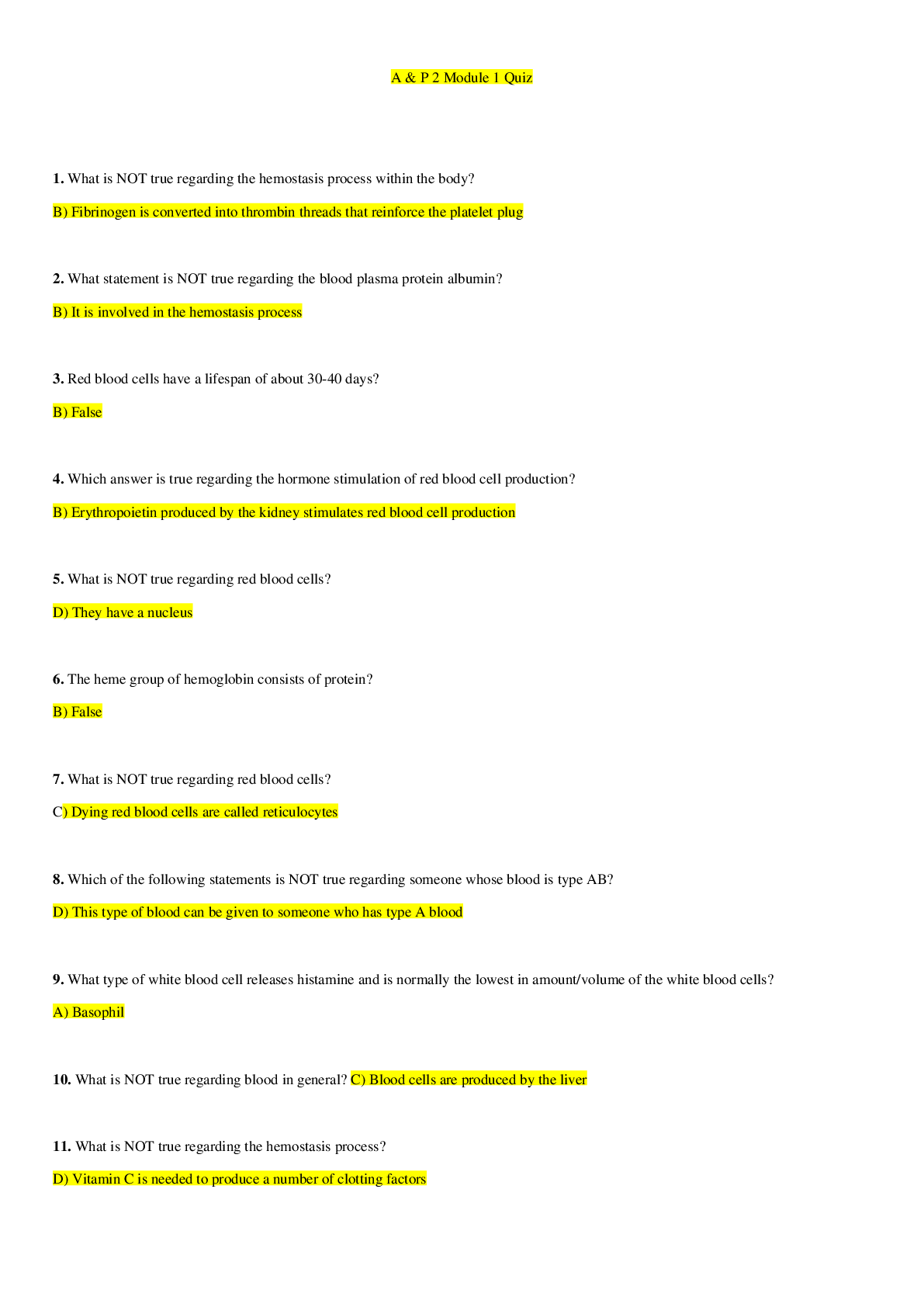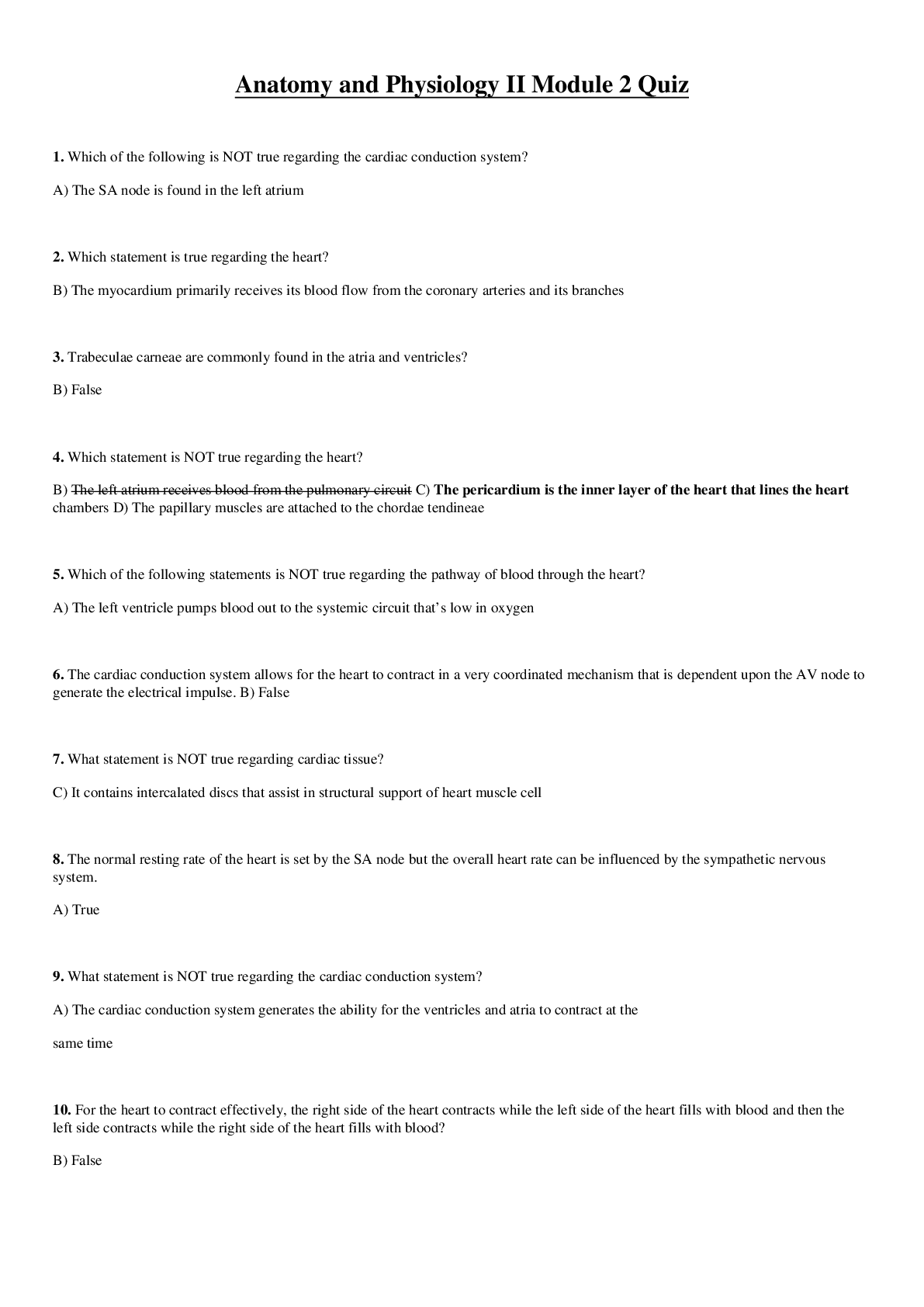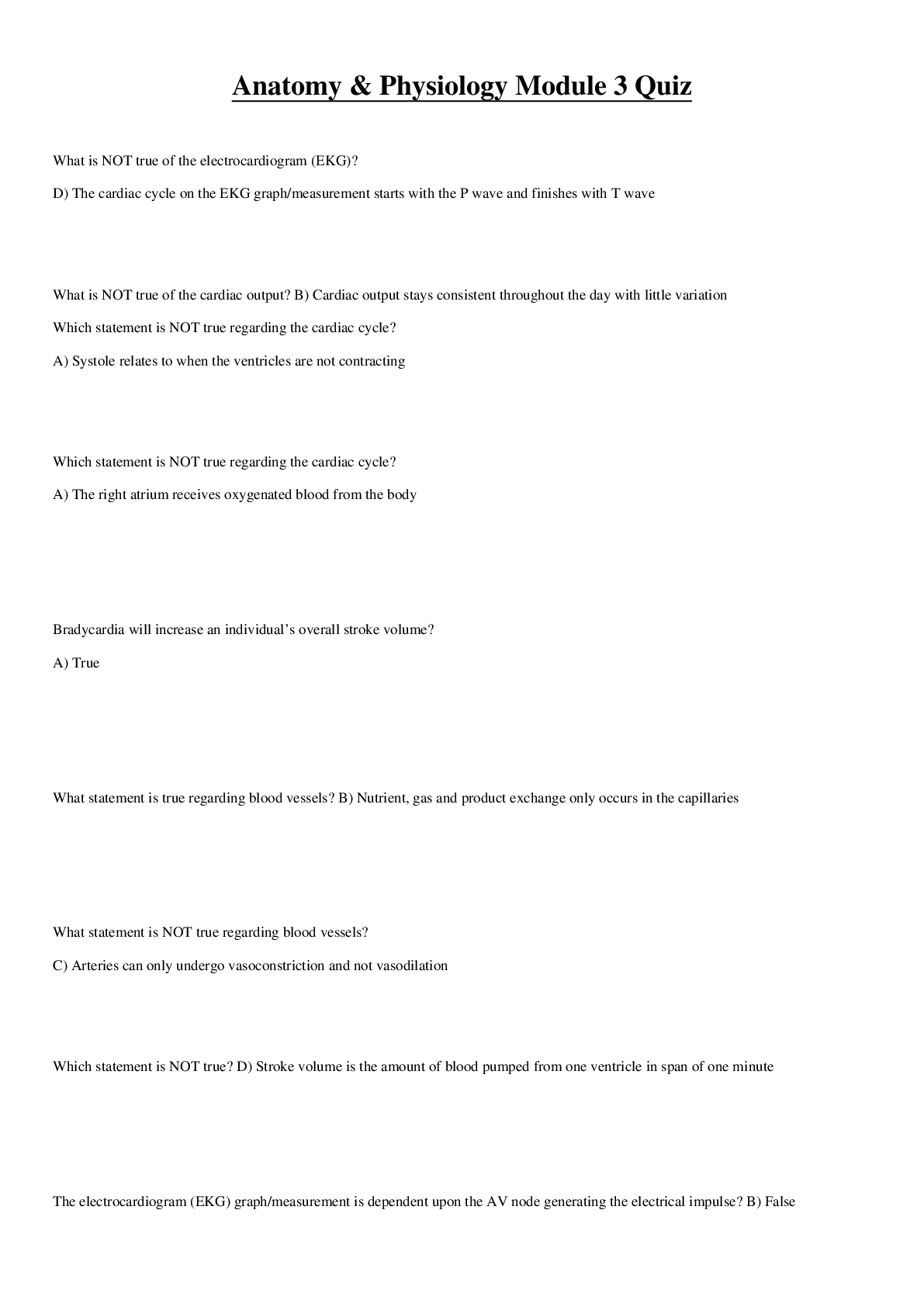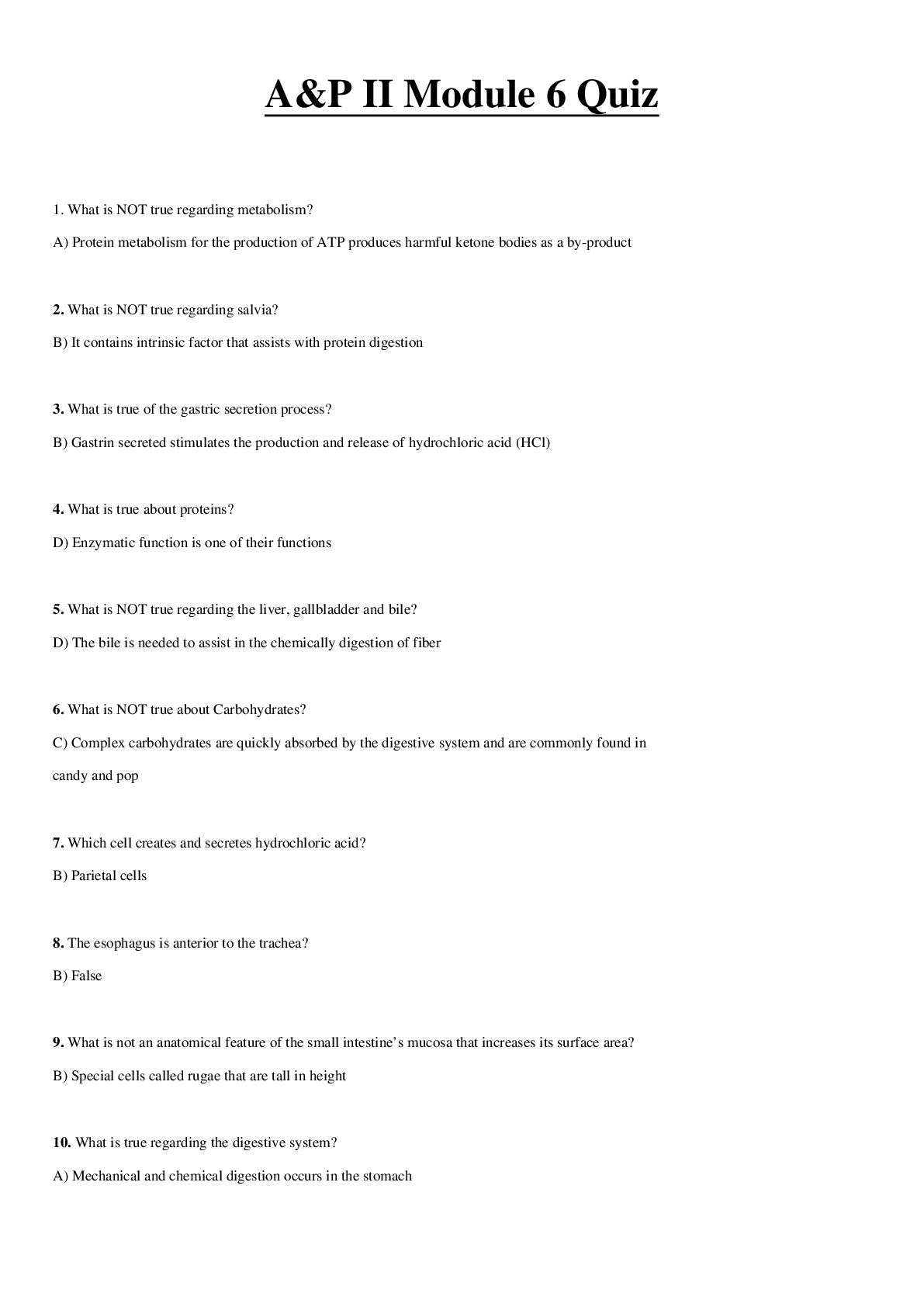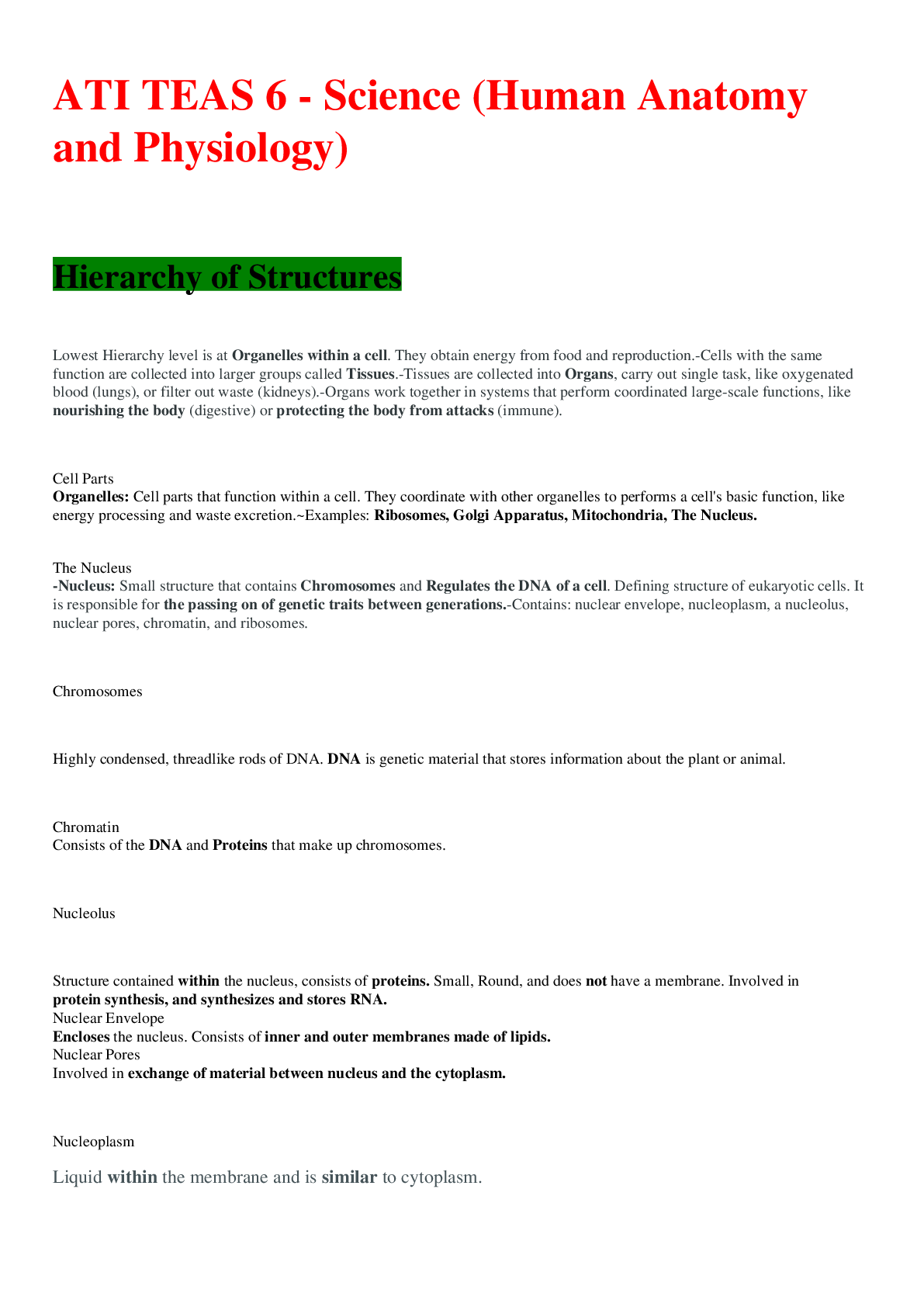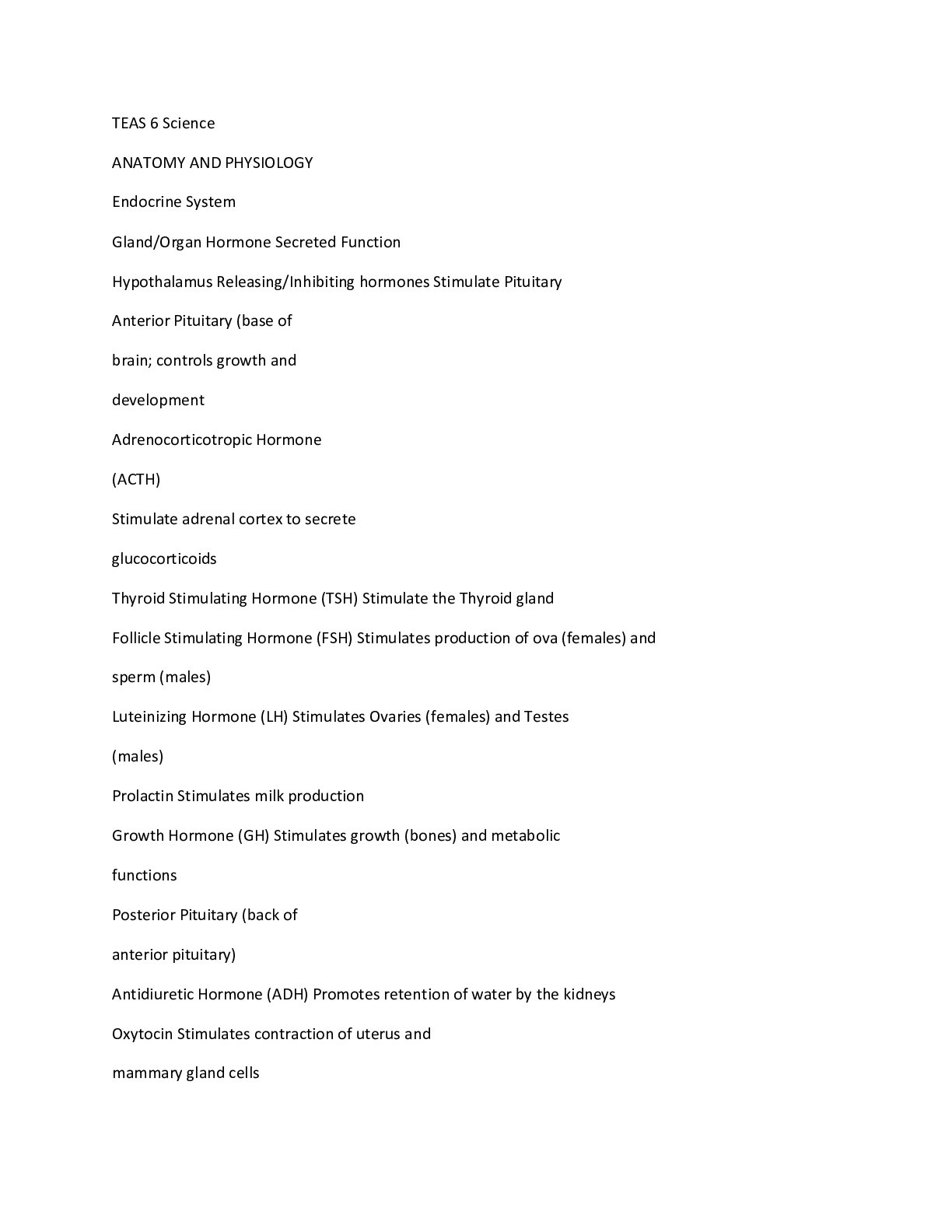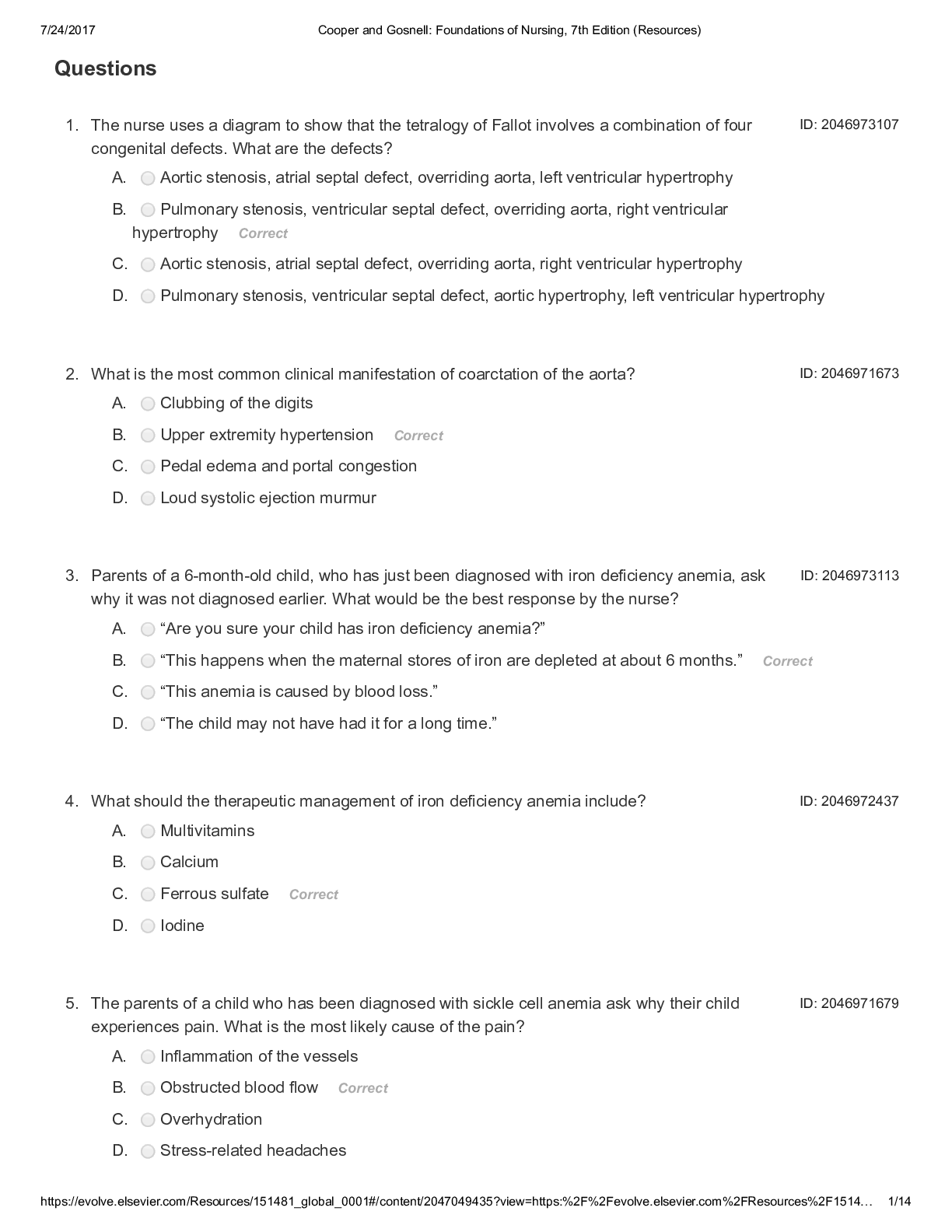Micro Biology > STUDY GUIDE > HESI A2 Anatomy and Physiology Study Guide 2017 (All)
HESI A2 Anatomy and Physiology Study Guide 2017
Document Content and Description Below
HESI A2 Anatomy and Physiology Study Guide 2017 Table of Contents: Lesson 1 Skeletal System 1 Lesson 2 Body Directions/Plans. 10 Lesson 3 Muscular System 22 *Lesson 4 Circulatory System 27 *Le... sson 5 Endocrine/Hormone System 34 Lesson 6 Urinary System 38 Lesson 7 Integumentary System 43 Lesson 8 Digestive System 48 *Lesson 9 Nervous System 51 *Lesson 10 Senses System 55 *Lesson 11 Immune System 58 Lesson 12 Reproductive System 61 Comprehensive Practice Test 61 Answer Key For All Lessons & Practice Test 68 If you’re pressed for time, then start with the underlined lessons. HESI always tests over these body systems whether it’s version 1 or 2. www.ReadyForTheHESI.org © 2017 All Rights Reserved. Lesson 1: Skeletal Xiphoid Process (pointy end of sternum) © 2017 All Rights Reserved. www.ReadyForTheHESI.org 1 Practice Worksheet Name any bone associated with the body part. Upper Arm: Ex: Humerus Hand: Foot: Head: Hip: Upper Leg: Lower Arm: Lower leg: Name the body part associated with the bone. Ulna: Ex: Lower arm Clavicle: Mandible: Talus: Fibula: Ribs: Tibia: Metacarpals: Name bones found in the following regions: Head: 1. Z 2. M 3. M Chest, Shoulder, Collar Bone, and Spine: 1. C 2. S 3. R Upper Leg: 1. F Kneebone: 1. P Lower leg: 1. T 2. F Foot: 1. T 2. C 3. T 4. M 5. P 4. V Metatarsal: Maxilla: Sternum: Pelvic: 5. S Arm: 1. H 2. U 3. R 4. C 5. M Femur: 6. P Hips: 1. P 2. S © 2017 All Rights Reserved. www.ReadyForTheHESI.org Lesson 1, Practice 1: Skeletal System 1. Where is the ulna located? A. leg B. head C. arm D. hip 2. How many thoracic vertebrae are there? A. 12 B. 13 C. 14 D. 15 3. Which of these is NOT part of a leg bone? A. tibia B. fibula C. tarsals D. femur 4. Which of these is NOT part of arm and hand bones? A. humerus B. ulna C. metatarsals D. carpals 5. Where is the cranium located? A. arm B. head C. leg D. hip 6. Which bone is the pelvic girdle associated with? A. sacrum B. femur C. sternum D. clavicle 7. Which bone can be found in the foot? A. radius B. clavicle C. scapula D. calcaneus 8. Which of the below is also called a breastbone? A. sternum B. clavicle C. scapula D. fibula 9. The is the bone structure of a person’s jaw. A. zygomatic B. maxilla C. mandible D. cranium 10. Which of the following is part of the lower leg? A. femur B. tibia C. ulna D. sacrum 11. How many lumbar vertebrae are there? A. 4 B. 5 C. 6 D. 7 12. Which of the below is NOT associated with the patella? A. scapula B. tibia C. femur D. fibula 13. Which bone is part of the thigh? A. tibia B. femur C. fibula D. talus 14. is also called your cheekbone. A. zygomatic B. maxilla C. mandible D. cranium 15. Which of these is NOT part of the hand bones? A. metacarpals B. metatarsals C. phalanges D. carpals 16. is a bone that makes up the foot. A. coccyx B. talus C. radius D. femur 17. makes up part of the shoulder. A. scapula B. tibia C. fibula D. patella 18. are also called digits. A. clavicle B. sternum C. phalanges D. talus 19. Cervicle, Thoracic, Lumbar are types of bones. A. hip B. vertebrae C. pelvic D. mandible 25. How many total bones in the body? A. 1120 B. 605 C. 206 D. 82 20. tailbone. is also called the 26. What is the name of the fluid found A. sacrum B. coccyx C. femur D. scapula around the cavities of the patella to facilitate movement and shock absorption? A. interstitial fluid B. fluid 21. The pelvis is also called the hip bone. A. C. synovial fluid D. plasma B. sternum C. patella D. calcaneus 22. These bones cage your lungs: A. phalanges B. vertebrae C. ribs D. talus 23. Metatarsals are part of the . A. foot B. hand C. upper leg D. upper arm 24. How many cervical vertebrae are there? A. 5 B. 6 C. 7 D. 8 27. Which three bones articulate in the elbow joint? A. sacrum, coccyx, and femur B. phalanges, ribs, and talus C. humerus, radius, and ulna D. humerus, femur, and radius 28. The hyoid is superior to the A. larynx B. mandible C. cerebellum D. cranium 29. The xiphoid process is superior to the A. larynx B. mandible C. ribs D. humerus Lesson 1, Practice 2: Skeletal System 1. Which of the following is found in the chest? ............................................................................continued................................................................................ [Show More]
Last updated: 2 years ago
Preview 1 out of 122 pages

Buy this document to get the full access instantly
Instant Download Access after purchase
Buy NowInstant download
We Accept:

Reviews( 0 )
$14.00
Can't find what you want? Try our AI powered Search
Document information
Connected school, study & course
About the document
Uploaded On
Jun 03, 2021
Number of pages
122
Written in
Additional information
This document has been written for:
Uploaded
Jun 03, 2021
Downloads
0
Views
92


